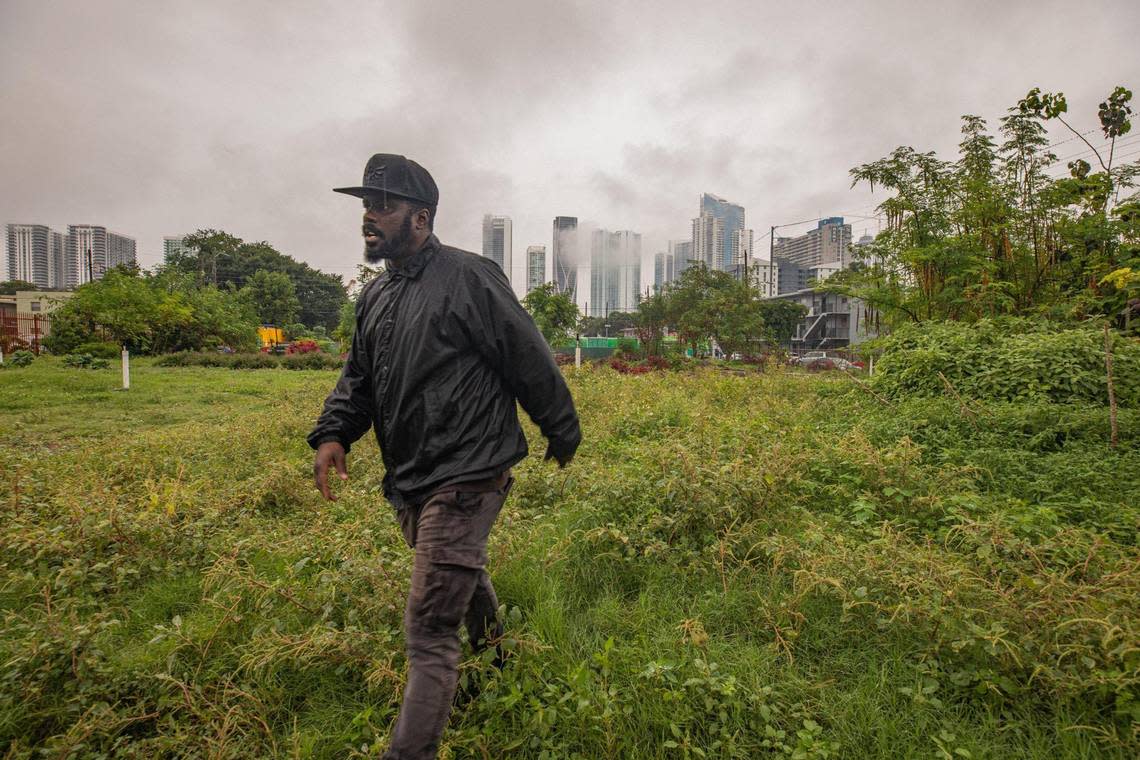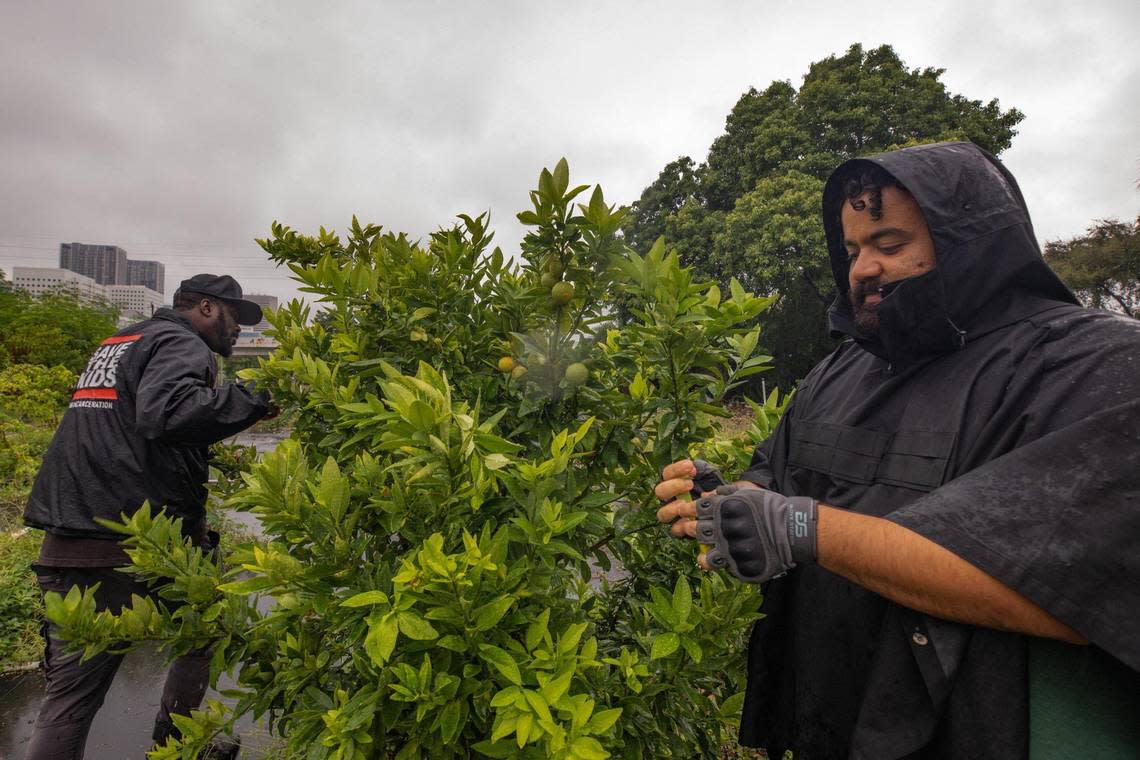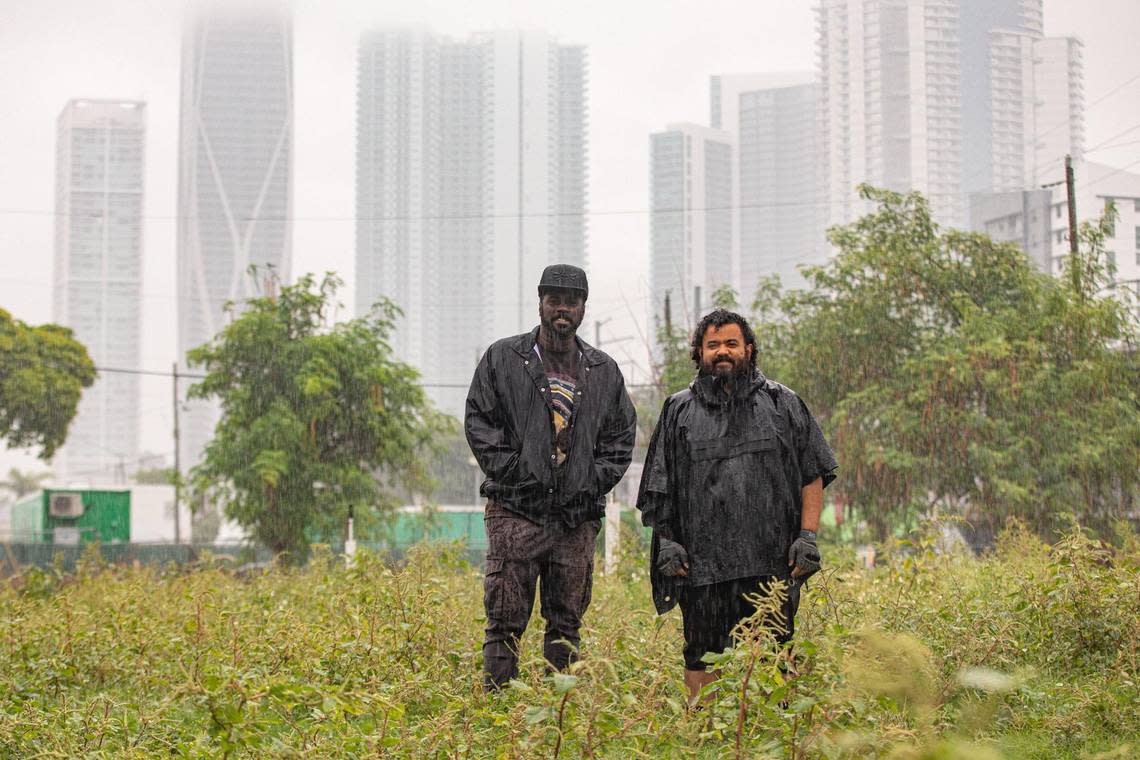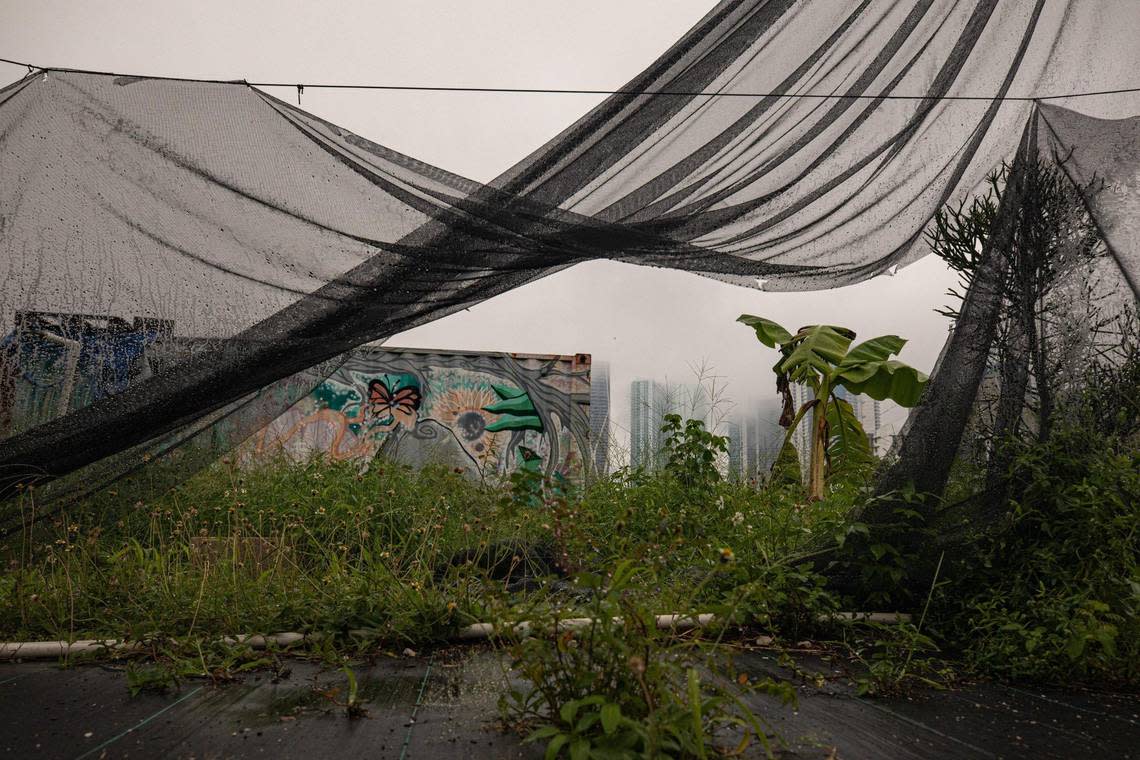This organization creates urban farms to help residents of Miami’s fresh-food deserts
David Roper and Jorge Palacios of the Green Haven Project, a Miami nonprofit organization, are on a mission to sprout urban gardens of healthy food for low-income communities in South Florida. They are tackling these fresh-food deserts in communities of color by educating and organizing youth and volunteers to help create neighborhood-grown fresh food alternatives for these communities.
Nearly five years ago, these two friends were helping out at the Overtown Youth Center and visited the grounds of what is now Green Haven’s first community garden, a 2-acre urban farm in the center of Overtown. “We both immediately knew that we had to try to get in there somehow to support and help to empower the community in the area,” Palacios said.
Their vision was to turn that land into a green oasis, where the fruits of their labor would be shared with the Overtown community for free. Together with two other board members, support from Citizens for a Better South Florida, TD Bank, the Arbor Day Foundation, Curtis Foundation, Miami Foundation and other partners — plus the help of countless volunteers — they turned their vision into reality. The Green Haven Project has been so successful, they are now starting additional gardens to serve food deserts around South Florida.

“We teach people in the Black and Brown community how to grow food, and then all the fresh produce that we grow we give it back to the community for free. We’re not charging anyone anything because a lot of Hispanic and Black communities across the United States are already food deserts,” said Roper, a social justice and community activist. “So instead of complaining about problems and issues — I don’t see these folks at the top fixing it anytime soon — we just do it ourselves, and we teach everyone around us how to do it and move forward from there.”
An estimated one million people live in food deserts in South Florida. Food deserts are areas where there is little or no access to fresh, healthy food offerings. According to the American Heart Association of South Florida, the Miami-Fort Lauderdale metro area has the highest number of people living in food deserts in the state.

On a recent weekend, a group of about 40 University of Miami students was helping to ready the Overtown garden for fall planting season. Roper shared the history of Overtown with the students and why it’s a food desert and then they got to work. Other days, Green Haven may have anywhere from 5 to 50 or more volunteers, and Roper and Palacios post the volunteer days on the Green Haven Project’s Instagram page. “If you’re free, you can come through,” Roper said. “We try to keep it as genuine as possible. People are there because they choose to be.”
About half of the garden is fruit trees — about 100 in all — and the other half is vegetables and herbs. For the fall season, squash, cucumbers, kale, collard greens and pumpkin are being planted. Depending on the time of the year, carrots, eggplant, garlic chive, Thai basil, cranberry hibiscus, papayas, mangos and moringa could be in abundance. “Everything we grow is organic,” Roper said.
During the pandemic, Green Haven Project also opened an air-conditioned food pantry on the Overtown site. In addition to food items available for free, there are items like diapers and school supplies. More than 10,000 people have been fed through their garden and food pantry in the last three years, the founders say.
In addition to spreading the word when fruits and vegetables are available for harvest, Green Haven Project hosts workshops about gardening and the health benefits of eating fresh food, plant giveaways and community events.

Palacios says it is a privilege to give back to families and see their reaction when they receive all this support for free. “Oftentimes, there’s a lot of people that create these opportunities and then they want people to jump through hoops to get free things. And that’s not the case for us — if you need help, here it is,” said Palacios, who was driving around the neighborhood giving away avocados on a recent afternoon.
For the volunteers, gardening with Green Haven Project can feel like a form of therapy, Palacios added. “It’s exciting just knowing that what you’re creating is making people feel good.”
In the past year, word has spread, and Roper and Palacios now have a list of organizations and schools in food deserts that would like to partner with Green Haven Project on community gardens.

Green Haven has opened a garden in the Brownsville neighborhood of Liberty City in partnership with The Smile Trust — they call it Smile Haven. Gardens are also sprouting at Carol City Middle School in Miami Gardens and Whiddon-Rogers Education Center in Fort Lauderdale. The organization’s newest plot of land is in Homestead, where they will be creating a garden about the same size of the Overtown site. In the plans is a garden in Richmond Heights, in partnership with the NAACP and a church that offered use of the land.
“Once you’re there long enough, in a neighborhood, you pretty much become part of the neighborhood, you become a neighbor,” Roper said. “Naturally people didn’t understand what we were doing at first, but once people see you’re consistent, they see that you’re being genuine about what you’re doing, they gravitate toward that,” Roper said.
“Wherever there’s land, and we can create green spaces for the people, then that’s where we’re going to be.”
How to Help
People can donate through the donation link on greenhavenproject.org. Green Haven Project posts volunteer opportunities on its Instagram page and its website. Volunteers are always welcome to help out and be a part of the mission.
